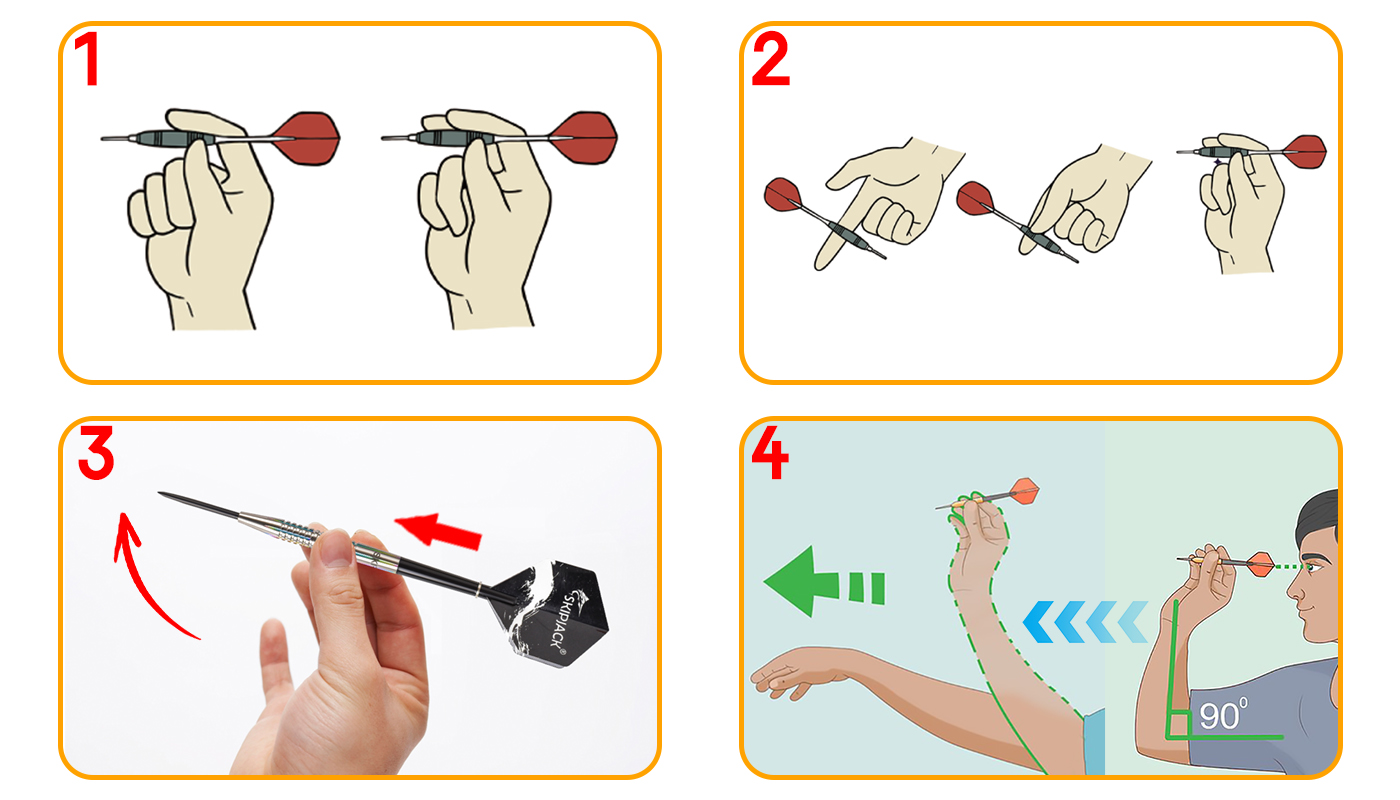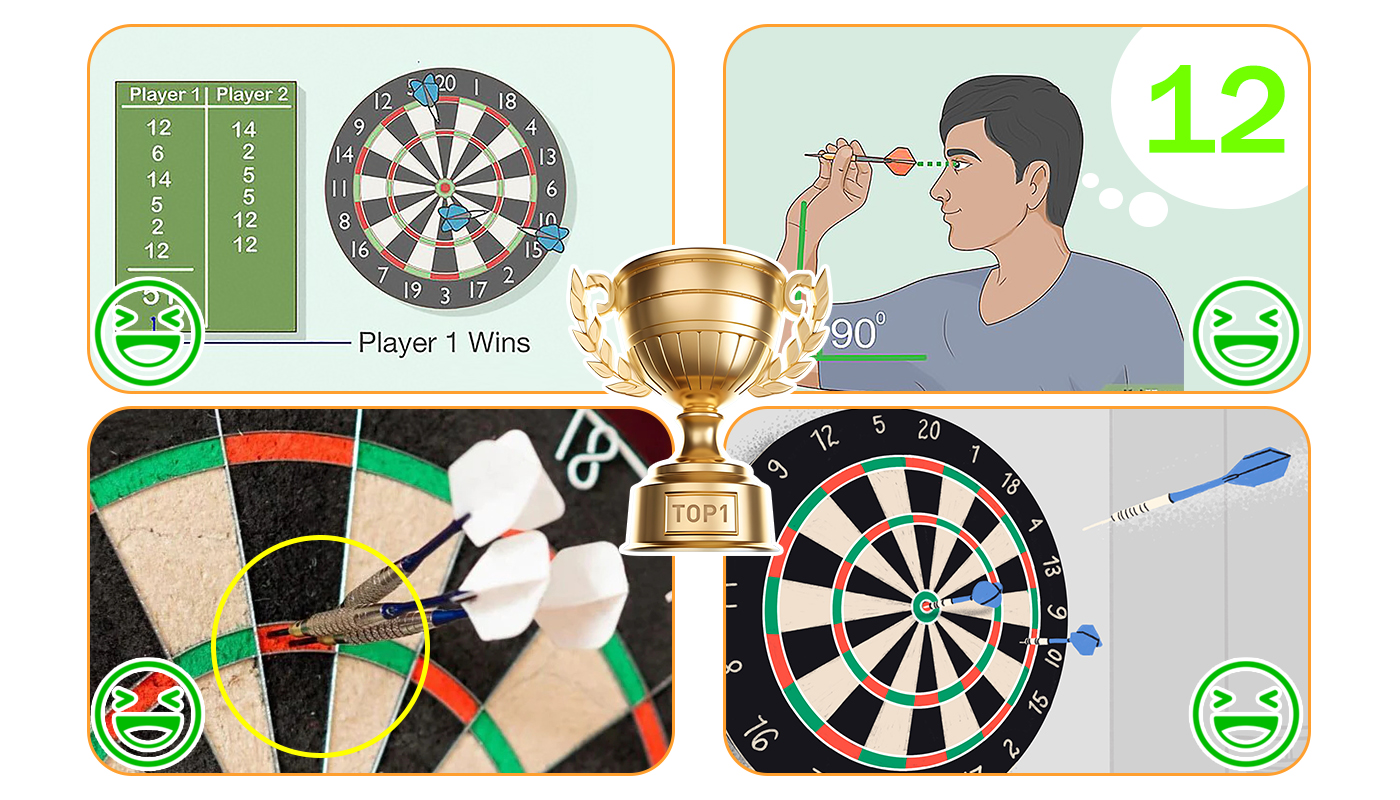Introduction to Darts
Darts is a classic game that has evolved from a pub pastime to a highly competitive sport with professional leagues, tournaments, and millions of fans around the world. Whether you’re playing casually with friends or aspiring to become a top-level competitor, understanding the fundamentals of darts is essential. The beauty of darts lies in its simplicity, but beneath that simplicity lies a wealth of strategy, skill, and precision.
Darts traces its origins back to medieval England, where soldiers would practice by throwing short arrows at the bottoms of barrels or tree trunks. The game began to take form in the early 20th century, with standardized dartboards being introduced by the National Darts Association in 1908. The iconic "London" or "Standard" dartboard, with its unique sections of scoring areas, has been the go-to model for decades. Over the years, darts has grown in popularity, with professional competitions such as the
PDC World Darts Championship drawing large audiences.
Why Darts is a Popular Game
Darts' popularity can be attributed to its low cost and accessibility. All that’s needed is a dartboard and some darts, making it easy for people of all ages to enjoy the game. Furthermore, darts combines skill and strategy with a social aspect, making it a perfect choice for both casual and competitive play. Whether in a pub, at home, or on the professional circuit, darts provides entertainment and challenges players to improve their hand-eye coordination, concentration, and decision-making.
Essential Darts Equipment
Having the right equipment is essential for success in darts. The gear you choose will directly affect your accuracy, consistency, and overall performance. Darts is a precision sport, and even slight variations in your equipment can make a significant difference.
Types of Darts: Steel Tip vs. Soft Tip
The two primary types of darts are
steel tip and
soft tip.
Steel tip darts are the traditional choice, designed for use with bristle dartboards. They are heavier, with metal tips that are ideal for sticking into the dense fibers of a traditional dartboard. Steel tip darts are typically favored in professional settings due to their durability and precision.
On the other hand,
soft tip darts are equipped with plastic tips and are primarily used with electronic dartboards. These darts are lighter and are designed to work with scoring systems that automatically register the darts’ hits. Soft tip darts are popular for recreational play and are more forgiving in terms of weight and throw dynamics. Whether you choose steel or soft tip darts depends on the type of dartboard you intend to use and the style of play you prefer.
Dartboard Setup and Measurements
Setting up your dartboard correctly is crucial for both casual and competitive play. The regulation distance from the throw line (also called the oche) to the dartboard is 7 feet 9.25 inches (2.37 meters). The center of the bullseye should be positioned at a height of 5 feet 8 inches (1.73 meters) from the floor.
The dartboard itself is divided into 20 numbered sections, each with specific point values. The most important areas to be familiar with are the bullseye (50 points for the inner ring, 25 for the outer), the double and triple rings, which multiply the points, and the segments, each worth different points depending on where the dart lands.
Accessories
While darts and a dartboard are the basic essentials, there are several accessories that can enhance your game. These include dart flights, which stabilize the dart in flight, dart shafts, which determine the dart’s length and stability, and dart cases, which protect your darts from damage. Additionally, dart mats can help players maintain proper foot positioning and prevent damage to floors.
Grip Techniques: How to Hold a Dart
A proper grip is fundamental to achieving accuracy and control when throwing darts. Whether you’re a beginner or a seasoned player, understanding how to hold the dart can dramatically affect your consistency.
The most common grip involves holding the dart lightly between the thumb and the first two fingers. Your thumb should rest against the rear of the dart, with your index and middle fingers positioned along the dart's shaft. The grip should not be too tight, as this can cause tension in the arm and reduce accuracy. A relaxed grip allows for better control and smoother release of the dart. Experiment with different grips to find what works best for you, but always focus on a consistent hold each time you throw.
Proper Stance and Throwing Technique
A stable and balanced stance is key to consistently throwing accurate darts. Stand with your feet shoulder-width apart, facing directly toward the dartboard. Your throwing arm should be positioned at about a 90-degree angle, with your elbow in line with the target. Keep your body relaxed and avoid shifting your weight during the throw.
The throwing motion itself is all about fluidity and control. Pull the dart back with your throwing arm, ensuring that your elbow stays steady. Release the dart smoothly, with a gentle flick of the wrist, aiming for the desired target. Avoid “muscling” the throw, as this can lead to inaccuracies. Instead, focus on maintaining a consistent motion, which will help your accuracy over time.
Understanding Dart Scoring
Darts scoring can seem complex at first, but once you understand the basics, it becomes intuitive. The dartboard is divided into 20 numbered sections, with each section containing a segment that awards specific points. To achieve higher scores, players need to aim for sections such as the double (which scores twice the points) or the triple (which scores three times the points).
Dartboard Segments and Points
Each of the 20 sections on a dartboard is assigned a number between 1 and 20, with a total of 21 scoring areas (including the bullseye). The double ring and triple ring significantly impact the score, as they multiply the point values. The bullseye, at the center of the dartboard, is the most valuable scoring area, with the inner bullseye worth 50 points and the outer ring worth 25 points.
How to Score in 501 and Other Popular Games
The most popular game in darts is 501, where players start with a score of 501 points and try to reduce that number to exactly zero. The first player to reach zero wins. The trick in 501 is to end the game with a double, meaning the last dart thrown must land in one of the double segments.
Other common games include 301, which is similar to 501 but starts with a lower score, and Cricket, where players try to hit specific numbers (20, 19, 18, 17, 16, and 15) and close them out while also scoring points on the numbers.
Doubles and Triples Importance
The importance of doubles and triples in darts cannot be overstated. Doubles and triples allow players to accumulate higher scores with fewer darts, increasing the chances of finishing a game quickly. Mastering the art of hitting doubles and triples is one of the keys to becoming a successful dart player.
To get more detail about scores, click on the article⬇️:
Basic Darts Games for Beginners
For beginners, it’s important to start with simple games that focus on building accuracy and familiarity with the dartboard. One of the easiest games to play is Around the Clock, where players must hit each number from 1 to 20 in order. This helps players practice their aim and get comfortable with hitting different sections of the board.
Another beginner-friendly game is 501, where players start with a score of 501 and try to reach zero. This game is excellent for learning the nuances of scoring and finishing a game on a double.
Advanced Darts Strategies
As you progress in darts, developing advanced strategies is essential. One strategy involves focusing on your opponent's weaknesses. If your opponent is weak at hitting specific numbers or doubles, you can aim to take advantage of that and control the game. Another strategy is feinting, or throwing darts to make it appear as though you’re aiming for one area of the board when you’re actually targeting another.
At a competitive level, it’s also crucial to understand shot selection. A professional player knows when to go for high-scoring areas like the triple 20, or when to play more conservatively and aim for doubles that might offer a higher probability of success.
Common Mistakes & How to Fix Them
Many beginners and even intermediate players struggle with common darts mistakes. One of the most frequent errors is inconsistent grip. A fluctuating grip can lead to unpredictable dart flights. To fix this, practice holding the dart the same way every time and pay attention to how your hand feels during the throw.
Another common mistake is improper foot placement, which can throw off your balance and aim. Ensure that your feet are firmly planted and that you’re not shifting your weight during the throw. Lastly, many players neglect their follow-through. Make sure your throwing arm follows through smoothly after releasing the dart to improve your accuracy and consistency.
Conclusion
Darts is a game of precision, strategy, and practice. Whether you're a beginner or an aspiring professional, mastering the basic techniques and understanding the game's rules and scoring will set you on the path to success. By practicing consistently and focusing on improving your grip, stance, and throw, you'll be able to refine your skills and start winning games. So pick up your darts, aim for the bullseye, and enjoy the challenge!
Ready to start darts game? Click on the link to wholesale high-quality darts products! ⬇️
FAQs
What is the best way to throw darts accurately?
Focus on a consistent grip, stance, and follow-through. Practice regularly to improve muscle memory.
How far should you stand from the dartboard?
The standard distance (oche) is 7 feet 9.25 inches (2.37 meters) for steel-tip darts.
Medium-weight (20-24g)
brass or tungsten darts with a standard grip are ideal for new players.
How do you score a bullseye in darts?
A single bullseye (outer ring) is 25 points, while the inner bull (double bull) is 50 points.
What’s the easiest dart game for beginners?
"Around the Clock" is great for practicing accuracy without complex scoring rules.
How can I improve my dart throwing consistency?
Record your throws, adjust grip/stance, and practice daily with targeted drills.













Whatsapp: +8615919340906
SKIPJACK DARTS
SKIPJACK DARTS
SKIPJACK DARTS